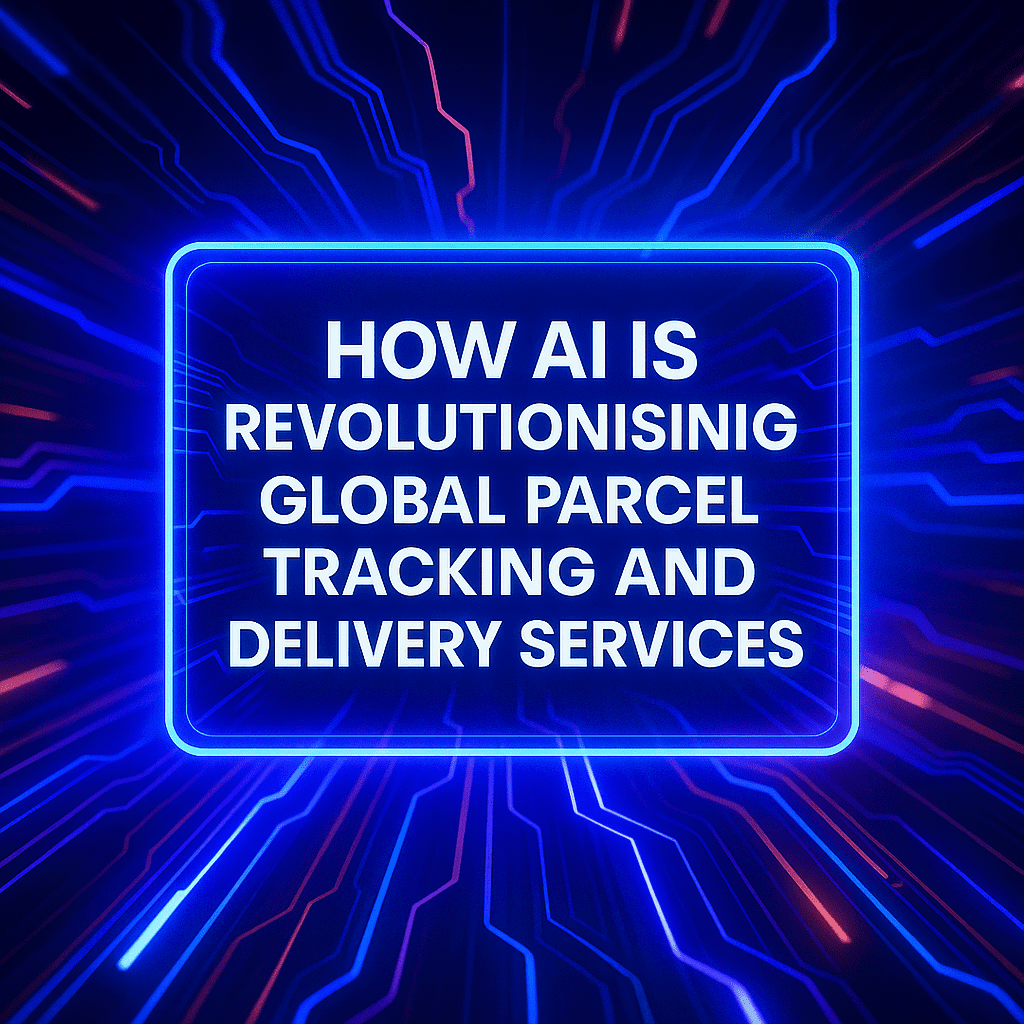Once all the stories, videos, and audio started, with the hard work of dozens of people backstage. Now, one piece of a story or an engaging video starts with a prompt or simply AI tools. For marketing specialists, copywriters, and content creators, the emergence of content creation apps allows for fast-forward decisions and the elimination of routine work.
With global spending on AI expected to hit $632 billion by 2028 and 67% of marketers already leveraging AI tools for content, the race is on to find the best platforms to streamline workflows and dominate search rankings. From crafting SEO-optimized blog posts in minutes to generating persuasive ad copy that converts, today’s AI content-generation tools are smarter, faster, and more intuitive than ever.
In this guide, we’ve rounded up the top 15 AI-powered tools you can’t afford to miss in 2025, including:
- ChatGPT (OpenAI)
- Gemini (Google)
- Grok 3 (xAI)
- Writesonic
- Claude 3.7 Sonnet
- Microsoft Copilot
- Jasper
- Chatsonic
- Perplexity AI
- Copy.ai
- Mistral AI (Mixtral)
- Qwen 2.5 (Alibaba)
- DeepSeek AI (R1)
- Wordtune
- LLaMA 3.1 (Meta AI)
Whether you’re a marketer, writer, or business owner, these tools will supercharge your content game and keep you ahead of the curve. You will find out about their main features, available prompt library, and terms of use.
Top 15 AI Content Generation Tools for 2025
1. ChatGPT (OpenAI)
ChatGPT, launched by OpenAI in 2022, remains a juggernaut in 2025 with its GPT-4o backbone, serving over 400 million weekly users as the gold standard for versatile content creation. From blog drafts to creative scripts, emails to poetry, its broad appeal stems from a decade of OpenAI research culminating in a 2025 update that adds multimodal input (text/images), “Operators” AI agents (Pro only), and real-time search integration.
Initially a conversational marvel, ChatGPT has grown into a creative and practical tool. In 2025, its ability to handle diverse tasks—brainstorming SEO ideas, drafting ad copy, or analyzing images—keeps it ahead of niche competitors, though its high-end pricing reflects its premium status.
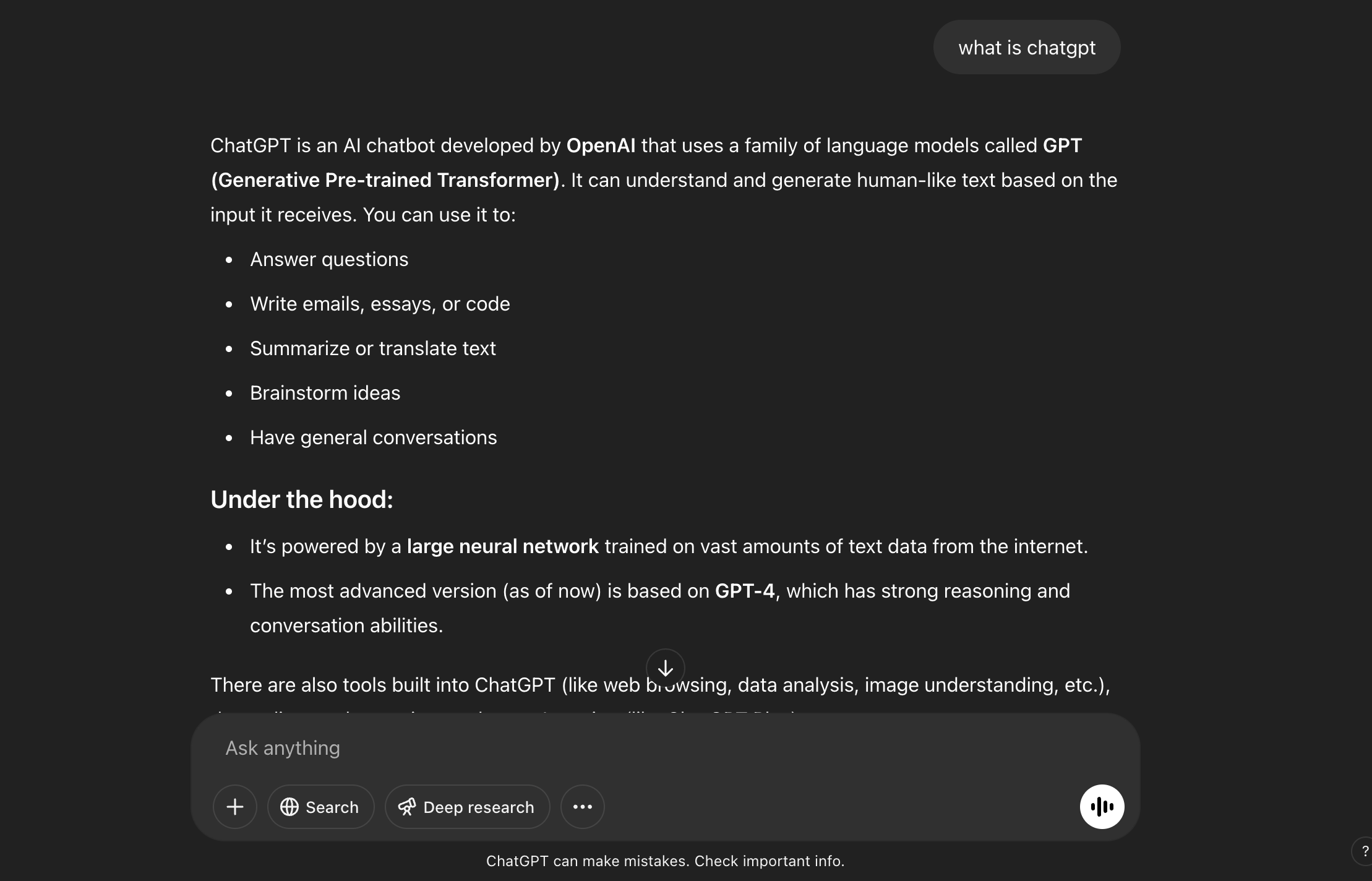
Technology: GPT-4o, multimodal, real-time search capabilities.
Standout Strengths: Multimodal input, Operators agents, creative versatility.
Limitations: Pro tier costly; free tier less powerful.
Pricing: Free tier (GPT-4o mini); Plus at $20/month; Pro at $200/month.
Target Audience: Writers, marketers, and creatives.
2. Gemini (Google)
Google’s Gemini, first teased in 2023 and fully realized by 2025, emerges as a multimodal AI titan, blending text generation (via Gemini) and image creation (via Imagen 3) with deep integration into Google Workspace (Docs, Sheets, Gmail).
Designed to compete with ChatGPT, Gemini’s 2025 update introduces Gemini Live (real-time voice chat), Canvas editing mode for collaborative drafts, and real-time Google data access, making it a powerhouse for blogs, ads, and SEO optimized content. Its human-like writing and contextual awareness—honed by Google’s vast search expertise—give it an edge in crafting pieces that rank high and engage readers.

Technology: Multimodal architecture, Google data integration.
Standout Strengths: Gemini Live, Canvas mode, Workspace synergy.
Limitations: Advanced features require subscription; less open-source.
Pricing: Free tier; Advanced at $19.99/month (with Google One).
Target Audience: Marketers, Workspace users, SEO pros.
3. Grok 3 (xAI)
Unveiled in February 2025 by xAI, Grok 3 is the third iteration of a groundbreaking AI series designed to push the boundaries of real-time content creation and conversational intelligence.
Born from xAI’s mission to accelerate human scientific discovery, Grok 3 builds on its predecessors’ wit and curiosity, now supercharged with a 1M-token context window—among the largest in the industry—enabling it to tackle sprawling narratives or complex research summaries without losing coherence.
Grok’s standout feature, DeepSearch, integrates live data from the X platform and the web, positioning it as a go-to for content that demands immediacy, such as breaking news blogs, trending social media threads, or market analysis reports.
In 2025, Grok 3 introduces three distinct output modes—Think (fast, concise drafts), Big Brain (deep analytical insights), and DeepSearch (research-driven outputs)—catering to diverse creative needs. It also offers Aurora image generation (with user confirmation), expanding its utility beyond text.
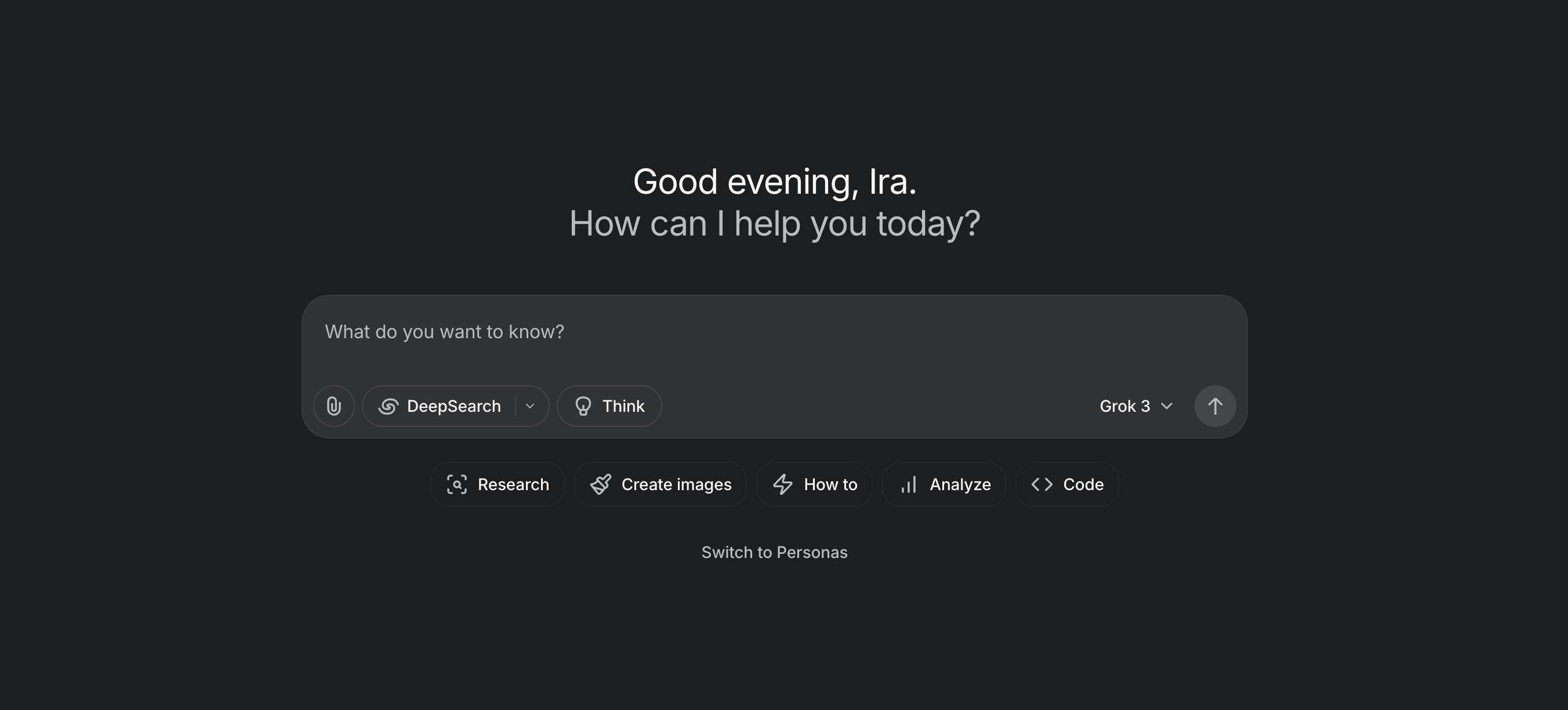
Technology: Proprietary xAI transformer model, optimized for reasoning and real-time data synthesis.
Standout Strengths: Massive context window, real-time X/web integration, and versatile output modes.
Limitations: X-centric design may alienate non-X users; image generation requires opt-in.
Pricing: X Premium+ ($40/month) or rumored SuperGrok plan ($30/month or $300/year).
Target Audience: Social media marketers, bloggers, journalists.
4. Writesonic
Writesonic, launched in 2021, transforms by 2025 into a comprehensive content creation platform that goes beyond its Chatsonic roots, integrating GPT-4, Claude, and Gemini models to power a suite of tools: text generation, Photosonic (AI images), and Audiosonic (text-to-speech).
Designed for businesses and creators who need an all-in-one solution, Writesonic’s 2025 update introduces an AI document editor, an SEO checker, and brand voice customization across all outputs—ensuring consistency from blogs to ad visuals.
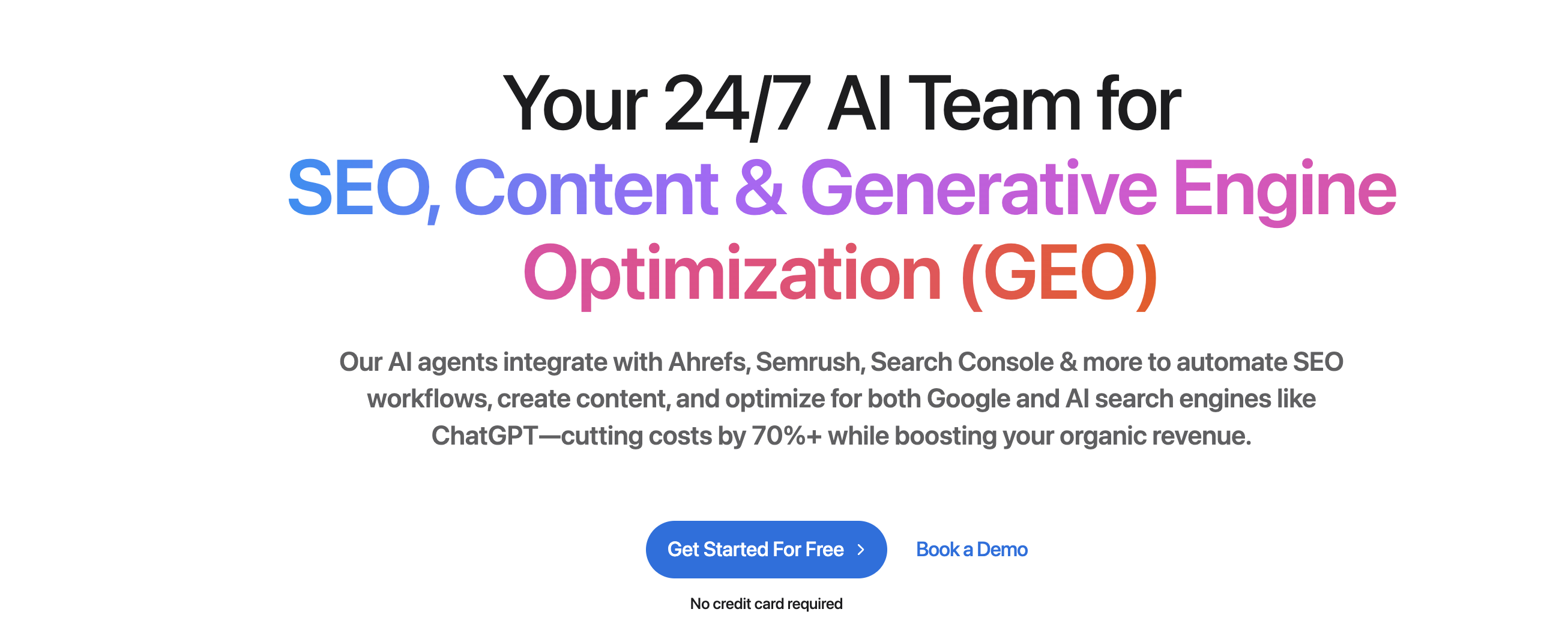
Technology: Multi-model architecture (GPT-4, Claude, Gemini) with a unified dashboard.
Standout Strengths: Multimedia tools, SEO checker, brand voice sync.
Limitations: Steeper learning curve; pricing scales with teams.
Pricing: Free tier (50 generations); Individual at $16.67/month; Teams at $25/month/seat.
Target Audience: Businesses, multimedia creators.
5. Claude 3.7 Sonnet
Developed by Anthropic, founded by ex-OpenAI researchers in 2021, Claude 3.7 Sonnet emerges in 2025 as a safe, interpretable AI tailored for long-form content with a conscience. Building on Anthropic’s commitment to ethical AI, this mid-tier model (between Haiku and Opus) balances performance and responsibility, excelling at whitepapers, case studies, and nuanced storytelling that require depth and trust.
Its 200K-token context window supports extensive documents, while 2025 updates like vision-to-text analysis (e.g., generating descriptions from images) and fluency in 20+ languages broaden its appeal for global businesses.
Claude’s design prioritizes safety—avoiding harmful biases or misinformation—which makes it a preferred choice for enterprises and educators in regulated industries. In 2025, its slower but deliberate processing reflects a trade-off for accuracy over speed, and its less creative flair compared to GPT-based tools is offset by its reliability. Claude 3.5 Sonnet’s rise signals a demand for AI that aligns with corporate values while delivering SEO-ready, authoritative content.
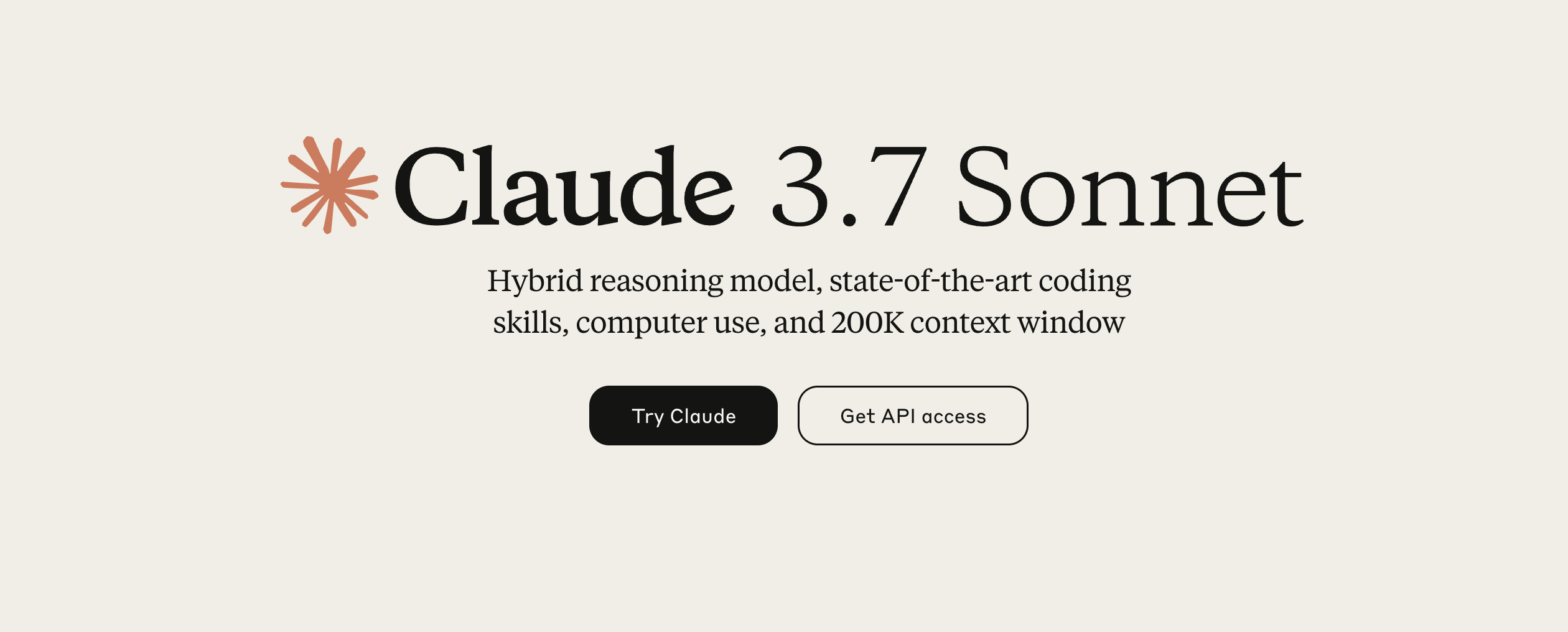
Technology: Anthropic’s safety-first framework, 200K-token context, multimodal.
Standout Strengths: Vision analysis, multilingual support, ethical outputs.
Limitations: Slower processing; less creative than competitors.
Pricing: Free tier; API from $3/million tokens.
Target Audience: Businesses, writers, educators.
6. Microsoft Copilot
Microsoft Copilot, first introduced in 2023 as a Bing Chat offshoot, blossoms by 2025 into a productivity-driven AI deeply embedded in Microsoft 365 (Word, Excel, Teams, Outlook). Leveraging GPT-4o and DALL-E 3 via OpenAI’s partnership, Copilot evolves from a search assistant into a contextual content generator that enhances business workflows—drafting emails, reports, or presentations with real-time data and visuals.
Its 2025 updates, like Copilot Vision (scanning browser content) and voice mode, make it a hands-free powerhouse, while its integration with Microsoft’s ecosystem ensures seamless use across tools. Initially aimed at enterprise users, Copilot’s free tier and affordable 365 add-on broaden its reach to small businesses and freelancers in 2025.
Its strength lies in productivity over pure creativity, offering marketers and teams a practical way to produce SEO-optimized docs or automate repetitive tasks, though its reliance on Microsoft’s suite limits standalone appeal.
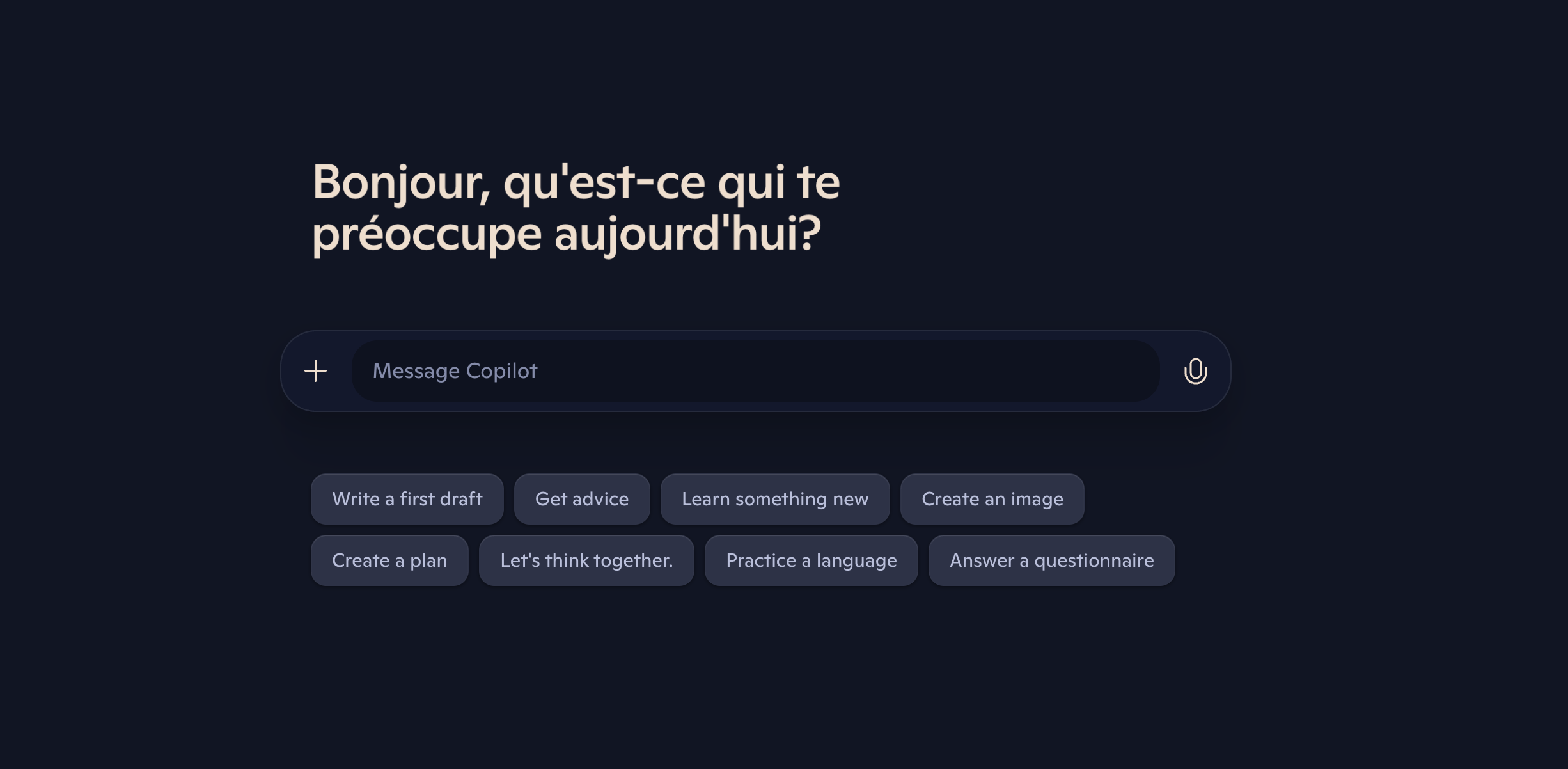
Technology: GPT-4o and DALL-E 3, Microsoft 365 integration.
Standout Strengths: Vision scanning, voice mode, 365 synergy.
Limitations: Best with Microsoft 365; less standalone flexibility.
Pricing: Free tier; Pro at $20/month; 365 add-on at $3/month.
Target Audience: Businesses, teams, Microsoft users.
7. Jasper
Jasper, originally launched as Conversion.ai in 2021, has evolved by 2025 into a polished, marketing-first AI platform that’s a mainstay for brands, agencies, and solo entrepreneurs. Acquired by a larger tech conglomerate in 2023, Jasper’s 2025 update doubles down on its roots in copywriting while expanding into a collaborative, SEO-optimized content powerhouse.
With a hybrid GPT-4 backbone and custom fine-tuning, it excels at generating blog posts, ad campaigns, email sequences, and social media content that aligns with brand voices and drives conversions. In 2025, Jasper introduces real-time team editing, AI-driven keyword suggestions, and over 50 refreshed templates tailored to emerging trends—like sustainability marketing or AI-driven e-commerce—making it a versatile choice for scaling content production.
Its integration with tools like Google Analytics and SEMrush enhances its SEO prowess, helping users craft pieces that rank high and resonate with audiences. While it’s less suited for technical or research-heavy writing, Jasper’s intuitive interface and focus on persuasive, brand-aligned content keep it a top pick for marketers aiming to streamline workflows and boost ROI in a competitive digital landscape.
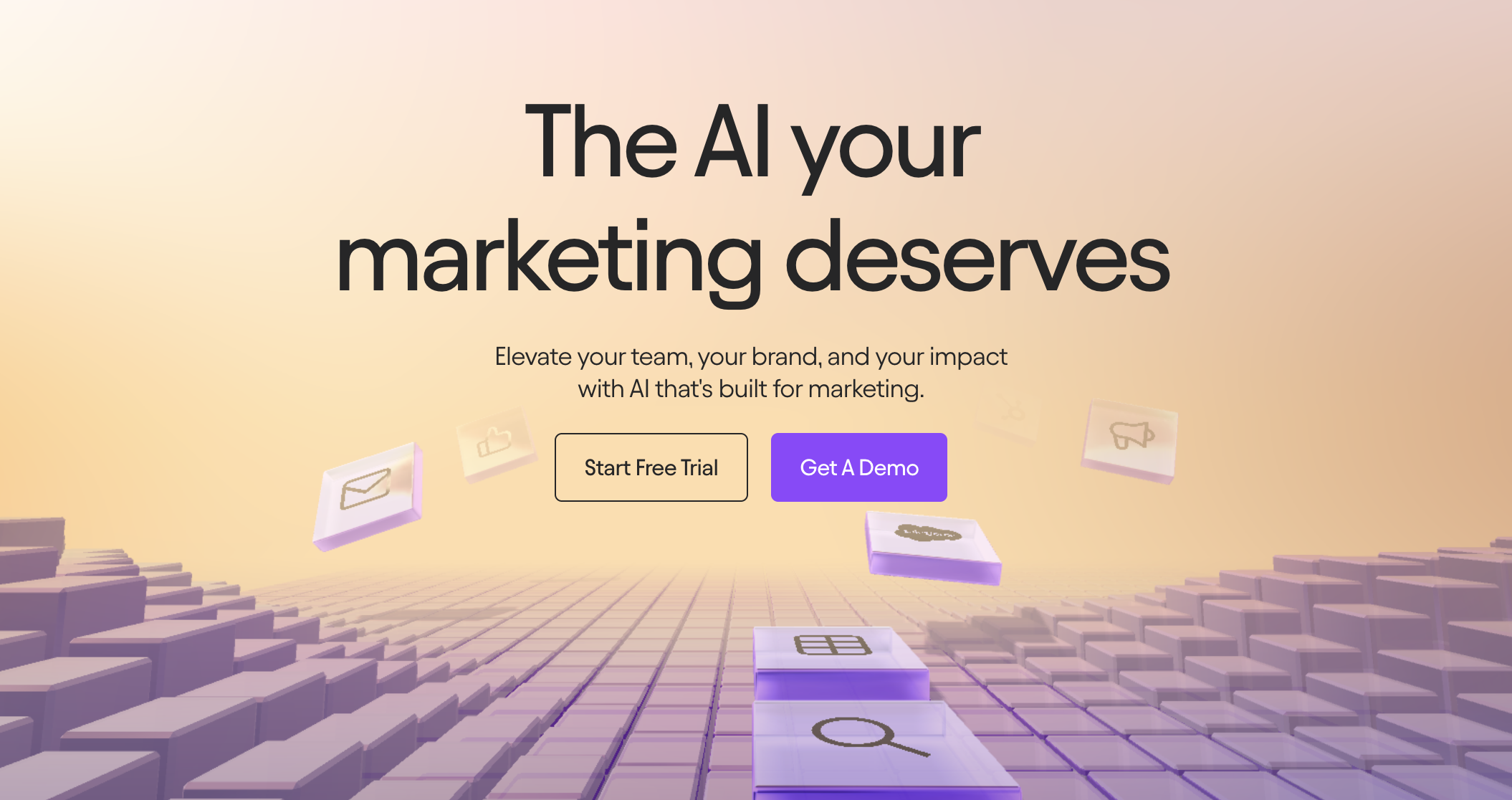
Technology: Hybrid GPT-4 and custom models, marketing-focused fine-tuning.
Standout Strengths: SEO tools, team collaboration, template variety.
Limitations: Higher team pricing; weaker at technical content.
Pricing: $39/month (individual); $99/month (teams).
Target Audience: Marketing teams, copywriters, small businesses.
8. Chatsonic
Chatsonic, Writesonic’s flagship offering, rockets into 2025 as a content and SEO specialist. It blends conversational AI with marketing tools to create blogs, landing pages, and social posts that rank and engage.
Launched in 2022 as a ChatGPT alternative, Chatsonic has evolved into a powerhouse by integrating real-time web data, giving it an edge over static models. Chatsonic introduces built-in keyword research, voice-to-text input, and a rank-tracking feature that monitors content performance—perfect for SEO pros aiming to dominate SERPs.
Its intuitive dashboard makes it accessible to small businesses, while its focus on actionable marketing outputs (e.g., SEO-optimized blog outlines) appeals to larger teams. Unlike Writesonic’s broader platform, Chatsonic zeroes in on conversational content with a modern twist, though its free tier’s 10K-word limit and weaker technical depth keep it geared toward creative and promotional use.
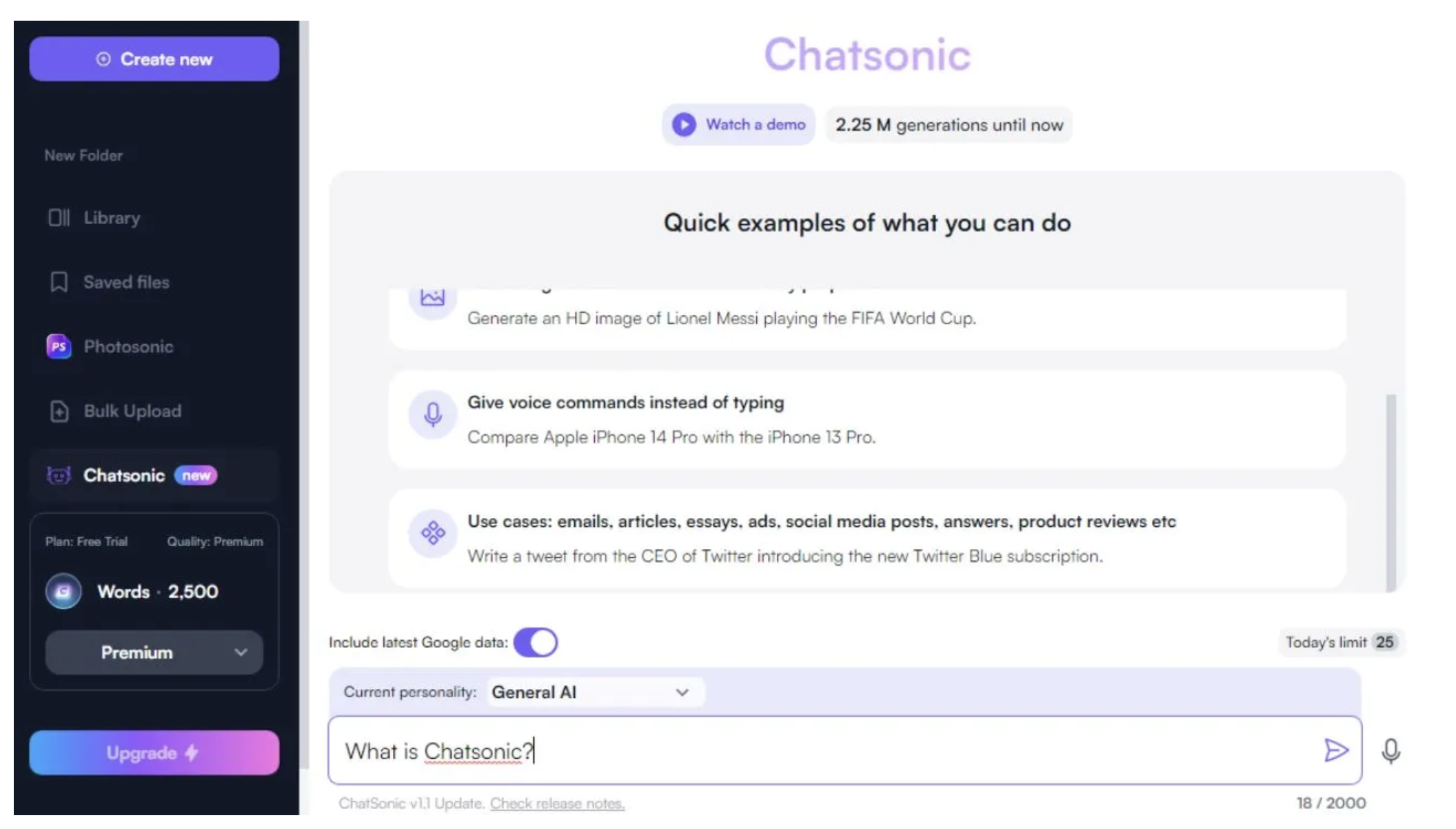
Technology: GPT-4 and custom models with real-time search integration.
Standout Strengths: Keyword research, rank tracking, voice input.
Limitations: Free tier limited; less robust for technical writing.
Pricing: Free tier (10K words/month); Pro at $12.67/month.
Target Audience: SEO marketers, bloggers, small businesses.
9. Perplexity AI
Born in 2022 as an AI-powered search engine, Perplexity AI evolves by 2025 into a hybrid tool that marries real-time research with content generation, offering sourced, factual outputs for blogs, FAQs, and reports.
Unlike traditional AI writers, Perplexity’s strength lies in its ability to scour the web and deliver answers with citations, making it a dream for creators who need credibility alongside creativity. Its 100K-token context window supports detailed responses, while the 2025 “pro search” mode dives deeper into niche topics, competing with Google for research utility.
In 2025, Perplexity gains buzz for its free tier and intuitive Q&A format, though its pro plan unlocks heavier usage for power users. It’s less conversational than ChatGPT and more research-focused, aligning with a 2025 trend toward trustworthy, SEO-friendly content that ranks high on authority.
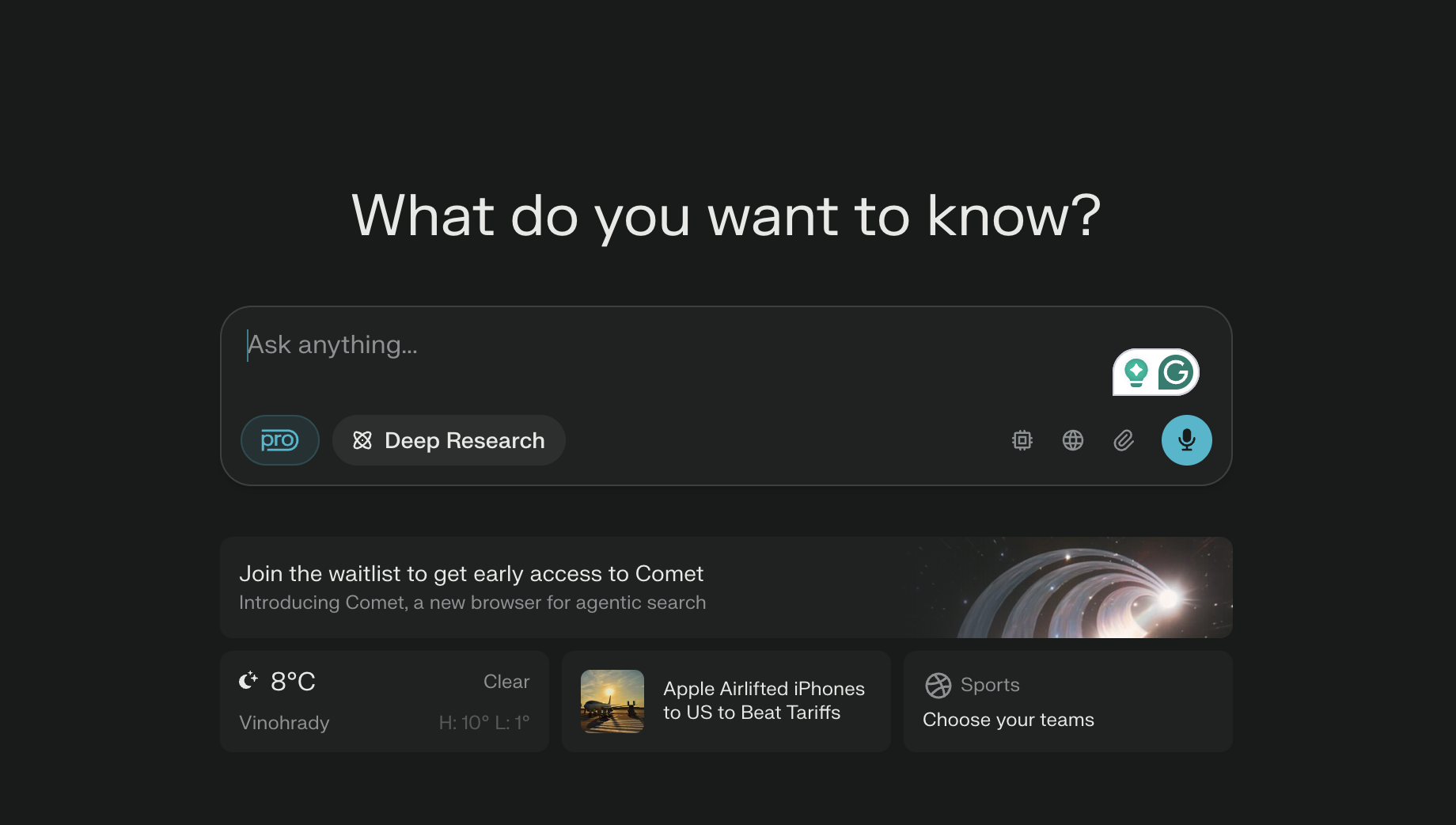
Technology: Custom model with web-crawling and 100K-token context.
Standout Strengths: Sourced answers, pro search, factual focus.
Limitations: Less conversational; pro tier needed for heavy use.
Pricing: Free tier; Pro at $20/month (300+ searches/day).
Target Audience: Content creators, researchers, SEO writers.
9. Copy.ai
Founded in 2020, Copy.ai carved its niche as a short-form content specialist, and by 2025, it’s sharpened that focus with a faster, smarter AI engine built on GPT-4o and proprietary optimizations. This tool is all about speed and conversion, churning out snappy social media captions, compelling ad headlines, and SEO-friendly product descriptions that hook audiences and drive clicks.
Copy.ai rolls out A/B testing for copy variations, Google Ads integration, and a “voice match” feature that ensures every output aligns with a brand’s tone—whether it’s playful, professional, or bold. While its 2,000-word free tier keeps it accessible, the Pro plan unlocks unlimited potential for e-commerce brands and PPC marketers who need to scale fast.
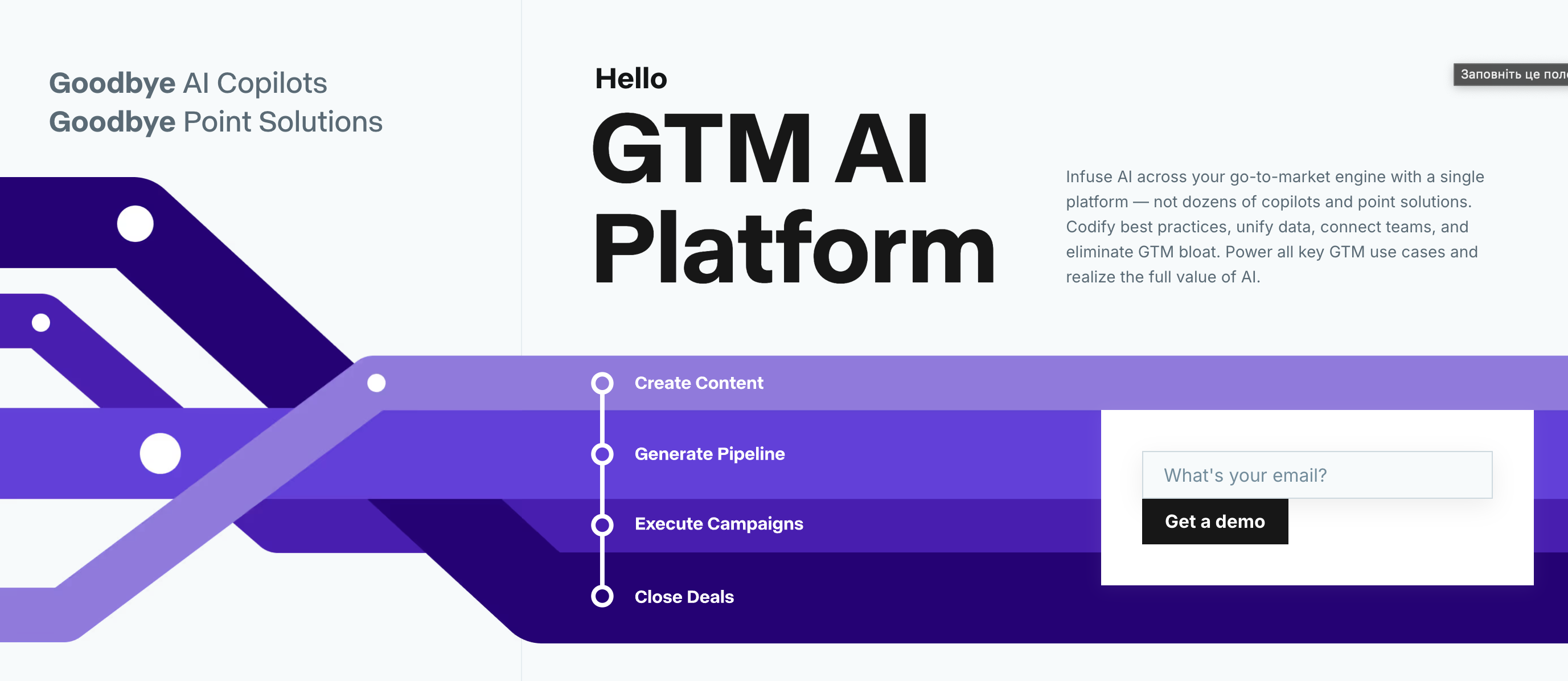
Technology: GPT-4o with fine-tuning for short-form persuasion.
Standout Strengths: A/B testing, Google Ads sync, brand voice consistency.
Limitations: Limited long-form support; free tier caps output.
Pricing: Free tier (2,000 words/month); Pro at $36/month.
Target Audience: E-commerce brands, social media managers, PPC marketers.
11. Mistral AI (Mixtral)
Mistral AI, a French startup founded in 2023 by ex-Google and Meta researchers, unleashes Mixtral in March 2025—a 24B-parameter, open-source model that blends multimodal and reasoning strengths under an Apache 2.0 license.
Designed to rival proprietary giants, Mixtral’s 128K-token context and 2025 updates (vision capabilities, multilingual support) make it a versatile choice for creative blogs, technical scripts, and global content. Its lightweight efficiency—running on modest hardware—pairs with open-source flexibility, earning it a cult following among developers and indie creators who want control without corporate costs.
In 2025, Mixtral’s free self-hosted option and forthcoming API (estimated $1–$2/million tokens) democratize advanced AI, though its technical setup may deter non-coders. Its rise reflects a 2025 push toward open, adaptable tools, offering writers and marketers a cost-effective way to craft SEO-rich multimedia content with a personal touch.
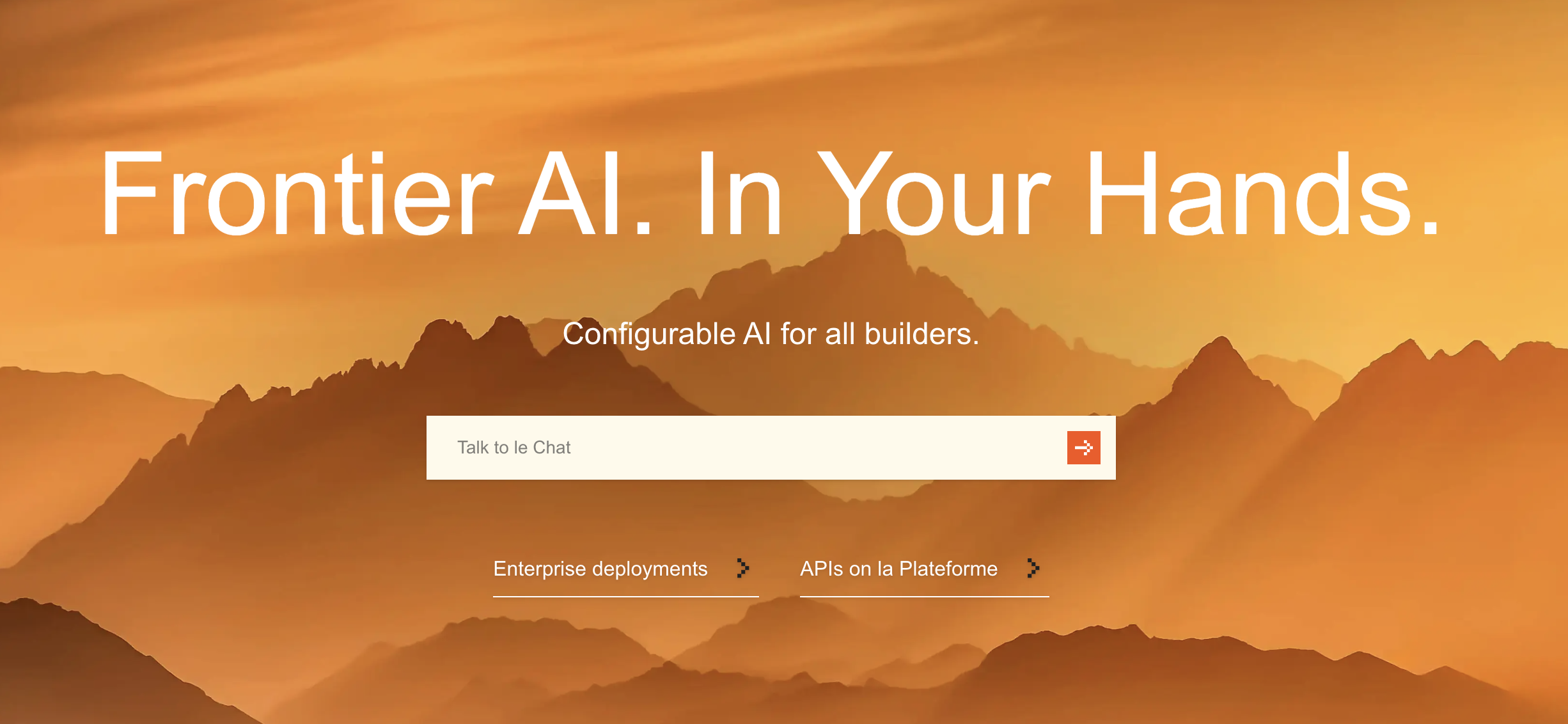
Technology: 24B-parameter model, 128K-token context, multimodal.
Standout Strengths: Vision support, open-source, efficiency.
Limitations: Technical setup required; API pricing TBD.
Pricing: Free (self-hosted); API estimated $1–$2/million tokens.
Target Audience: Developers, writers, indie creators.
12. Qwen 2.5 (Alibaba)
Released in early 2025 by Alibaba, Qwen 2.5 builds on its predecessor’s success as a multilingual, open-source AI, now with enhanced reasoning and coding capabilities that rival Western models.
Developed by Alibaba’s DAMO Academy, this 128K-token context tool targets global content creation—supporting over 30 languages—and excels at localized blogs, technical documentation, and code-driven tutorials.
In 2025, Qwen 2.5’s open-source availability via Alibaba Cloud offers customization for niche needs, while its enterprise-grade performance appeals to multinational brands. Its rise reflects China’s push into the AI spotlight, with a cost-effective API (estimated $1–$2/million tokens) making it a budget-friendly alternative to pricier tools.
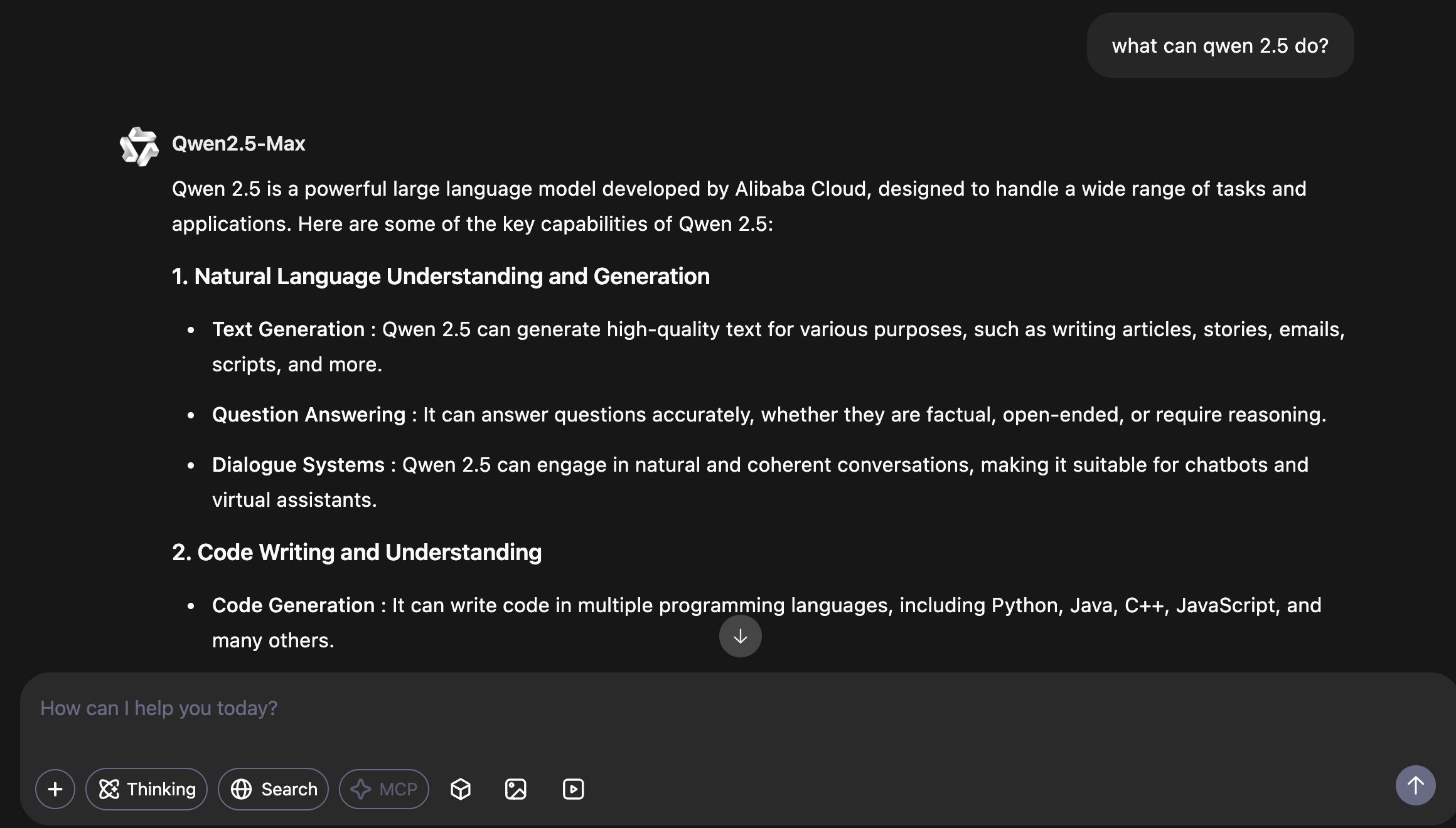
Technology: Alibaba’s transformer model, 128K-token context, multilingual focus.
Standout Strengths: Multilingual support, coding prowess, open-source options.
Limitations: Limited standalone access; API pricing TBD.
Pricing: Free via Alibaba Cloud (limited); API estimated $1–$2/million tokens.
Target Audience: Global marketers, developers, multilingual creators.
13. DeepSeek AI (R1)
Launched in January 2025 by DeepSeek, a Chinese AI research outfit, DeepSeek R1 emerges as a formidable open-source contender in the global AI race, challenging Western dominance with its cost-efficient, reasoning-centric approach.
DeepSeek is designed to democratize high-quality content generation. It targets technical and factual writing—think research papers, coding tutorials, or data-driven blog posts—where precision and transparency reign supreme. Its 128K-token context window ensures it can handle lengthy, structured documents, while its chain-of-thought reasoning breaks down complex ideas into logical, step-by-step outputs, complete with clickable source links for verification.
In 2025, DeepSeek R1 gains traction for its ultra-low API costs and open-source availability, appealing to budget-conscious creators and developers who want to customize their AI workflows. Unlike flashier, creative-focused tools, DeepSeek prioritizes substance over style, making it less suited for storytelling but unbeatable for authoritative, SEO-friendly content that ranks high on credibility.
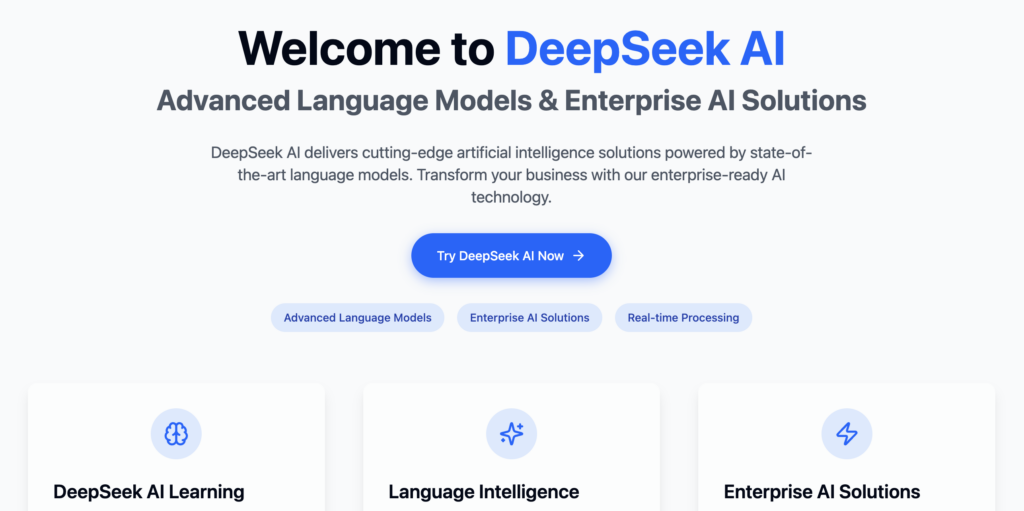
Technology: Custom transformer architecture with reasoning optimization.
Standout Strengths: Affordable API, transparent reasoning, open-source flexibility.
Limitations: Limited creativity; weaker at conversational content.
Pricing: Free on DeepSeek’s site; API from $0.55/million input tokens.
Target Audience: SEO writers, researchers, developers.
14. Wordtune
Launched by AI21 Labs in 2020, Wordtune started as a rewriting assistant and has grown by 2025 into a sophisticated editing tool that transforms rough drafts into polished, engaging content with an SEO twist. Unlike tools that generate from scratch, Wordtune thrives on refinement—taking existing text and enhancing its clarity, style, and keyword flow to meet modern content demands.
Its 2025 update introduces an “SEO polish” mode that optimizes drafts for search engines, a tone shifter for audience-specific adjustments (e.g., casual to formal), and real-time grammar suggestions that rival premium editors like Grammarly.
With a sleek browser extension and integrations with Google Docs and Microsoft Word, it’s a seamless fit for writers who value precision over volume. In 2025, Wordtune’s focus on readability makes it a blogger’s and editor’s dream, though its smaller context window limits its use for generating fresh content or handling massive documents.

Technology: Custom NLP model with real-time enhancement capabilities.
Standout Strengths: SEO polish, tone customization, affordability.
Limitations: Not for content generation; smaller context window.
Pricing: Free tier; Premium at $9.99/month; Teams at $24.99/month.
Target Audience: Bloggers, editors, content refiners.
15. LLaMA 3.1 (Meta AI)
LLaMA 3.1, released in 2025 by Meta AI, builds on the 2021 LLaMA lineage as an efficient, open-source model optimized for lightweight, high-quality content creation. With a 128K-token context and improved reasoning, it’s tailored for research and practical outputs—blogs, social posts, or chatbots—while integrating with Meta’s ecosystem (WhatsApp, Instagram).
Initially a research tool, its 2025 iteration broadens access via free licensing and partner APIs, appealing to budget-conscious creators who need performance without overhead. LLaMA 3.1’s efficiency shines on low-resource setups, and its Meta tie-ins enable seamless content deployment across platforms, though its lack of a standalone interface limits casual use.

Technology: Optimized transformer, 128K-token context, Meta ecosystem integration.
Standout Strengths: Efficiency, reasoning, free research access.
Limitations: No standalone platform; API via partners only.
Pricing: Free (research use); API pricing varies by partner.
Target Audience: Budget creators, researchers, Meta users.
Comparison Table of the Best AI Content Generation Tools
| Rank | Tool | Key Features | Pros | Cons |
| 1 | ChatGPT (OpenAI) | GPT-4o, multimodal (text/images), Operators agents, real-time search | Versatile, widely used, multimodal capabilities | Pro tier expensive ($200/month), free tier less powerful |
| 2 | Gemini (Google) | Multimodal (text/Imagen 3), Gemini Live, Canvas mode, Workspace integration | Human-like text, Google ecosystem synergy, real-time data | Advanced features require subscription, less open than rivals |
| 3 | Grok 3 (xAI) | Real-time X/web data via DeepSearch, 1M-token context, 3 output modes, Aurora image generation | Real-time insights, massive context for long-form, versatile modes | X-centric focus may limit appeal, image generation requires opt-in |
| 4 | Writesonic | Multi-model (GPT-4, Claude, Gemini), Photosonic images, Audiosonic speech | All-in-one multimedia, affordable, SEO checker | Steeper learning curve, pricing scales with team size |
| 5 | Claude 3.5 Sonnet | 200K-token context, vision-to-text, 20+ languages, ethical design | Safe and reliable, great for long-form and multilingual content | Slower processing, less creative than GPT-based tools |
| 6 | Microsoft Copilot | GPT-4o/DALL-E 3, 365 integration, Copilot Vision, voice mode | Productivity-focused, seamless Microsoft 365 integration | Best with 365 subscription, less standalone flexibility |
| 7 | Jasper | SEO keyword optimizer, real-time team editing, 50+ 2025 templates | Marketing-focused, strong collaboration, SEO integration | Higher team pricing, not ideal for technical content |
| 8 | Chatsonic | Real-time web data, keyword research, voice-to-text, rank tracking | SEO-optimized, affordable, marketing-focused | Free tier limited to 10K words/month, weaker at technical content |
| 9 | Perplexity AI | 100K-token context, web-sourced citations, pro search mode | Research-driven, credible outputs, free tier | Less conversational, pro tier needed for heavy use |
| 10 | Copy.ai | A/B testing for copy, Google Ads sync, voice match, fast short-form outputs | Conversion-driven, affordable, brand consistency | Limited long-form support, free tier caps at 2,000 words/month |
| 11 | Mistral AI (Mixtral) | 24B-parameter, 128K-token context, vision support, open-source | Efficient, free self-hosting, multimodal | Requires technical setup, API pricing TBD |
| 12 | Qwen 2.5 (Alibaba) | 128K-token context, 30+ languages, coding support, open-source options | Multilingual fluency, cost-effective, technical strength | Limited standalone platform, API pricing TBD |
| 13 | DeepSeek AI (R1) | 128K-token context, chain-of-thought reasoning, sourced outputs, low-cost API | Affordable, transparent reasoning, great for technical content | Less creative, weaker at conversational/narrative writing |
| 14 | Wordtune | SEO polish mode, tone shifter, real-time grammar, browser extension | Affordable, excels at refining drafts, SEO-friendly | Not for generating content from scratch, smaller context window |
| 15 | LLaMA 3.1 (Meta AI) | 128K-token context, efficient design, Meta ecosystem integration | Lightweight, free for research, great for budget users | No standalone platform, API via partners only |
The Significance of AI Content Creation Software
Today, paid advertising only motivates thousands of people to block it on various devices. The flood of spam that we usually call “digital advertising” no longer works. And some brands have already recognized this problem. They understand that creating communities on social media, providing valuable content, and communicating with the target audience are the only ways to get users to buy a product or use the brand’s services.
But there’s a price to pay for everything. We are talking about an army of content and SMM managers who work in a noisy office 24/7. As a consequence, we get a high cost of hiring, low-quality content, and a lack of desired results in sales.

With the advent of new technologies like AI and machine learning, with the shift from Web 2.0 to Web 3.0, the internet develops faster and is crowded with thousands of learning and working opportunities: different specialized software, AI tools for content writing, AI software for image and video generation, and even free packages for running a Private GPT for the enterprises.
Now IT specialists suppose many working issues can be solved by AI, so they work hard on the development of really worthy software: free and paid. A neural network is a method of artificial intelligence that works on the principle of the human brain. Neurons receive, process, and give back information, and connections pass it on. The main difference between neurons of a computer network is that they need constant training. People, on the other hand, expand their neural network when they learn something new.
Generative AI transforms industries and plays a significant role in the field of high-quality content marketing, optimizing processes while reducing the workload of content teams. Anyway, let’s find out the main principles of this technology’s work to learn whether AI can replace humans or not.
Explaining AI-Generated Content
Although human work results can’t be replaced by robots yet, artificial intelligence already plays an essential role across different industries, primarily in AI-powered web development, as more companies would like to have custom scalable AI solutions. AI tools can help you improve the quality of your content by making it more accurate, concise, and compelling, increasing the efficiency of the process by automating the research, writing, editing, and publishing.
To be more precise, AI content creation is the process of elevating machine learning models and algorithms to generate high-quality and engaging content according to the specified objectives. As a result, an AI system that works within the application analyzes data sets, learns and identifies patterns, and produces content in different styles and mimics human versions.
To understand the process of getting AI content, let’s understand the main terms of technology that we utilize.
Natural Language Processing
First comes the natural language processing that makes the machine work for us and create content.
Natural Language Processing (NLP) is a machine-learning technology that enables computers to interpret, manipulate, and understand human language. Organizations today operate a large amount of voice and text data from various communication channels, such as emails, messages, social media news feeds, video, audio, and more. For example, AI chatbots use NLP to automatically process data, analyze the intent or sentiment in the message, and respond to human communication in real time.
Processing AI generators is critical to effectively analyzing textual and spoken data. This allows for the elimination of differences in dialect, slang, and grammatical irregularities typical of everyday conversations.
Text and Visual Content Generator
Artificial Intelligence is now actively influencing business processes, automating almost any task, from trivial learning to computer engineering, even in complex industries. AI-powered generators are in the spotlight now as companies try to meet the growing demand and huge flow of original and relevant content.
Nowadays, AI can solve creative tasks like content or design creation, as it speeds up and facilitates the process significantly. AI generator works by creating text using NLP techniques — it is crafted by providing corporate data, adapting content for users’ behavior, and personalized descriptions of a subject.
Artificial Intelligence is a sequence of layers that all consist of neurons. Each of them performs a different role:
- There are neurons (or neuron structures) that learn to pick out important elements in images, like the hair of a cat or a dog.
- There are neurons that learn to make inferences based on the highlighted elements — for example, if an animal has long paws, it’s probably a dog.
All of them combine into groups (layers) and become a single artificial neural network.
Through AI tools, companies across different industries can generate personalized content and event train the private GPT model installed into the enterprise software. The main applications of AI content generation include:
- Content Marketing and SEO (automated landing pages, SEO-optimized blog posts, personalized content recommendations, social media posts);
- Content Creation in Journalism (data analysis, news articles generation, data-driven reports, storytelling, and more);
- PR and Advertising (writing press releases, invitations, brochures, memos, audience research);
- Sales (competitor analysis, sales email, cold DM writing, and brainstorming).
In most cases, generative AI is applied by middle and giant companies to enhance business processes and get rid of repetitive tasks, but as the market introduces more and more interesting AI applications, Dall-E, Lumen5, and Sounddraw, the younger audience is getting attracted. How to create an AI image generating app like Midjour, you can learn in our blog.
So, how does an AI generator work?
As an example, we can consider the process of training artificial intelligence to recognize faces. To train any AI correctly, we need to do two things: collect enough data and define what we are going to penalize it for. For this task, it is necessary to collect dozens of photos of all the people you want to identify and penalize the neural network if the person it suggests does not match the one on the photo.
Wrapping Up
Choosing the right AI content software for your business can be a challenge. There are many applications of AI in business, so it can be difficult to decide which one is ideal for you. To make an informed decision, it’s important to test different platforms and services and evaluate how well they fit your business goals. In this article, we looked at the 15 best AI content generators for creating absolutely any type of written piece and introduced audio and video AI editing tools. So, maybe one of them will be a perfect match for your needs.
Do you want to build your personal content creation tool? Our team offers state-of-the-art artificial intelligence services that will help you conquer the market. Contact us!




